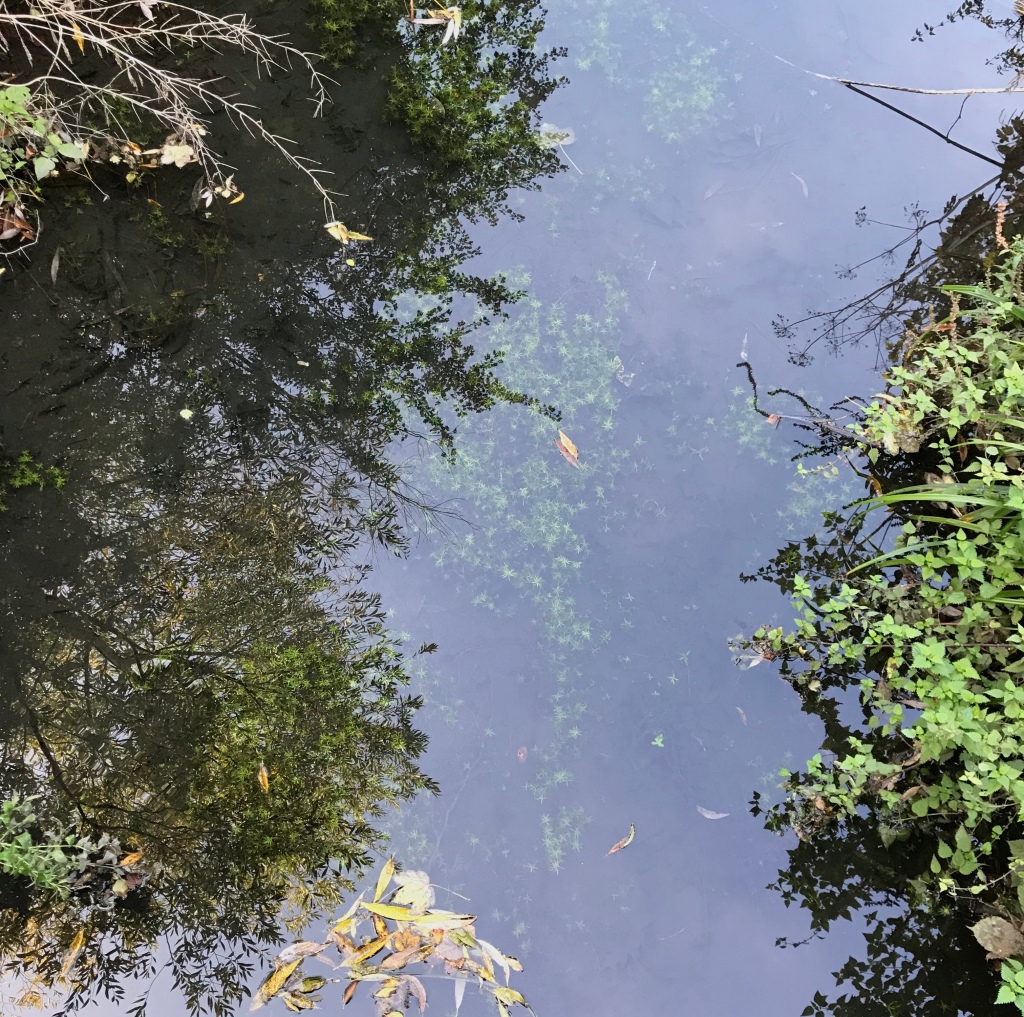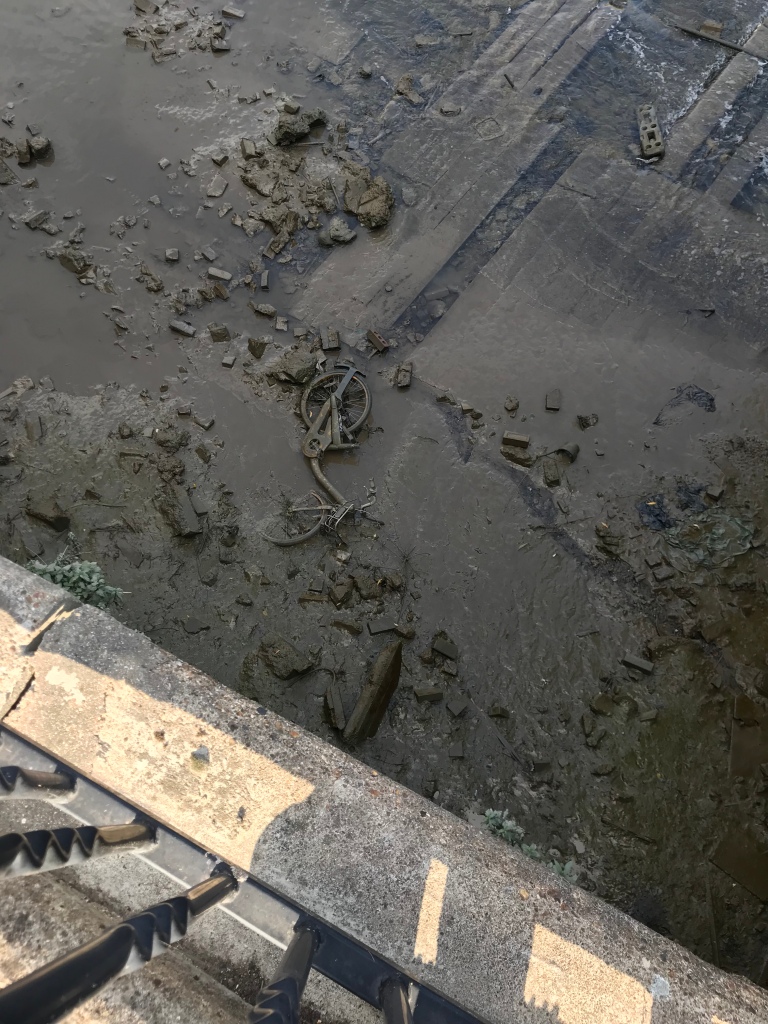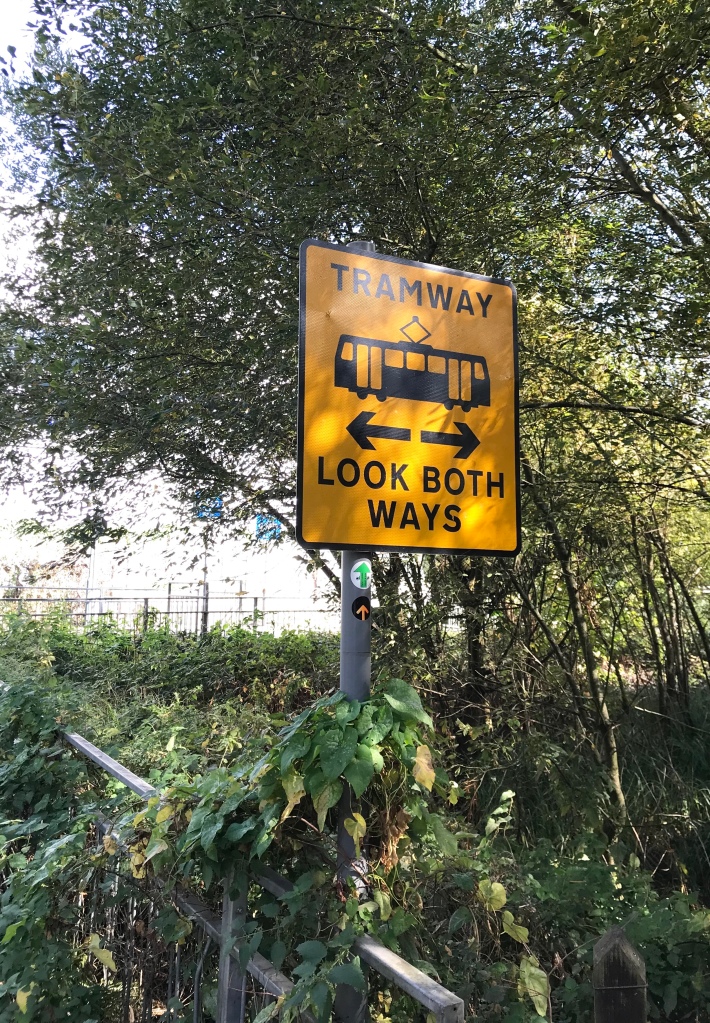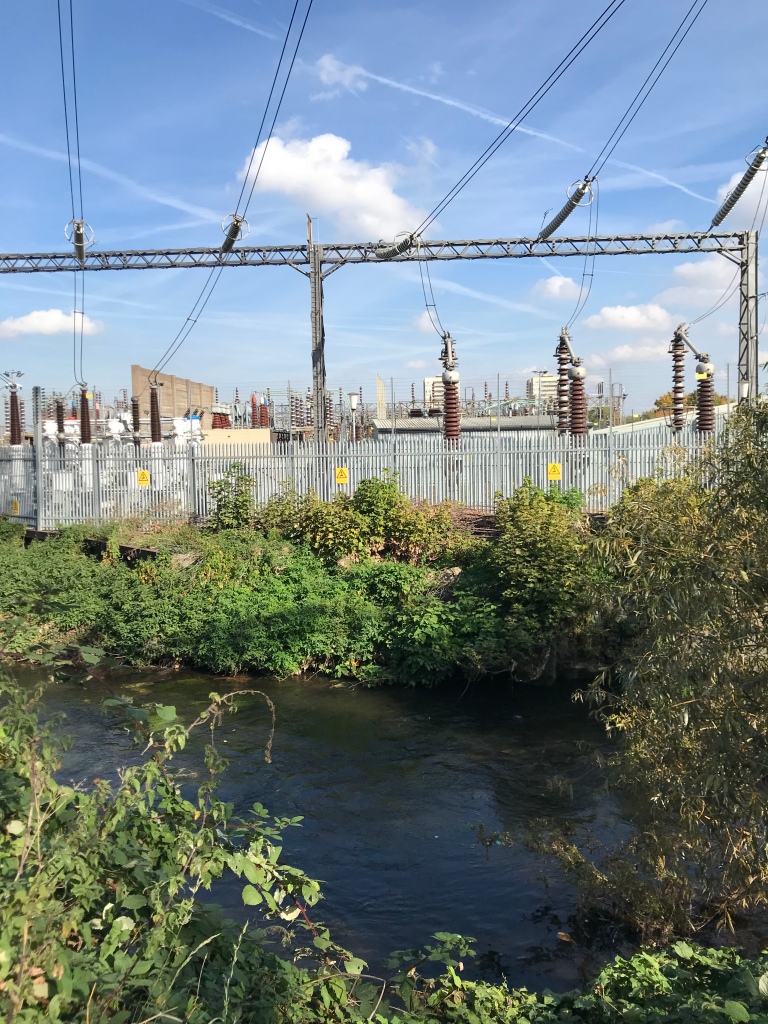
My original plan for writing this piece had been to follow the course of one of London’s ‘Lost Rivers’ downstream to the Thames. The aim was to take a walk, meandering around side streets and trickling along ‘A’ roads, as somewhere far beneath, the ghost of an old river, perhaps now in a gutter, ran towards its mouth.
London is home to several such lost rivers, including the Fleet, the Walbrook, Falcon Brook, Neckinger, Ambrook and my local, the mysterious sounding Effra, which are just some of the city’s vanished, or vanquished, Thames tributaries.
If you’re of a certain disposition, it is hard not to feel the tang of romance that such names can evoke. For many of these old watercourses, at least in written records of their senile stages, the story is one of human-driven decline, as they silted up, slowed, flooded inconveniently and began to stink of the raw sewage and dead things – sometimes human – that they carried downstream. In most cases, by the time some ingenious 18thcentury, or Victorian, engineer had culverted, buried or directed what was left underground and into the sewers, their work was an act of mercy.
A walk where once a river had flowed; that was the plan, but I couldn’t face it. Thanks to an increasingly obsessive consumption of bad news, the thought of tracing the course of a natural feature that was dead, or at best a mere shadow of its former self, had lost its appeal. Lately I keep approaching the internet with a sort of dread compulsion. I go to drink my fill of Brexit and Trump, squabbling politicians, trade disputes, wars, food-banks, boarded up high streets, angry protests, right-wing upsurges and stabbings and I feel numbed.
And then, as if politics and society aren’t grim enough, I turn to the latest reports of our collective destruction of Earth’s living systems. In this context all of the above become reframed almost as mere transient, parochial issues, worrying and depressing yes, but as nothing compared to the horrors contained within the latest despatches from the Anthropocene (or Edward O Wilson’s more pointed and visceral Eremocene – the age of loneliness).
Daily, yet more forests are hacked down in Poland, Brazil, or here, more plastic particles are discovered in the furthest, wildest reaches of the planet’s fabric, as well as closer to home, where more motorways are built and planned, more habitats destroyed, more creatures wiped from the world, or at best given a few years until doomsday – not least all insects. All. All of them – and I can’t properly digest it.
Yet, I know despair does no good, so I try and do my small bit, in part by volunteering with the local Wildlife Trust, and steering the garden, or leaving it, to be more wildlife friendly. I smile in the early mornings, looking through the window at a gang of five or six sparrows as they arrive over the roof of the house behind, bank sharply into the forsythia hedge and then dart back and forth from there to the feeder – sometimes quarrelling with robins, dunnock and tits. But then I recall the dozens of small birds – dickybirds my gran used to call them – that used to carpet her Bristol garden when I was very young. And they ain’t coming back.
Because of all this, certain journeys – like walking the course of a lost river – feel too much like saying goodbye. I wanted signs of life, so instead I decided to walk by the Wandle. This is a river that wants to be here and wants to live – as Peter Ackroyd notes in London Under, quoting Hilda Ormsby from London on the Thames(1924) “[the Wandle] particularly seems to resent being buried alive”.
For a long time the Wandle was known as an outstanding trout stream, celebrated by Isaac Walton and William Camden amongst others. Nelson is reported to have fished it, where a section ran through Lady Hamilton’s garden at Merton Place, which she dubbed ‘the Nile’ in tribute to him.

According to the London Encyclopaedia, in the early 18thcentury, 68 waterwheels were driven in various places along the river’s course. By the 1960s, industrial activity alongside the Wandle had taken a heavy toll and a polluted, sluggish river could no longer boast of its wild fish.
Now, thanks in part to the work of various friends groups and environmental organisations such as the Wandle Trust, the river is a cleaner, happier place and in stretches, trout can be found once more, as can chub, barbel, perch, roach and dace.
Naturally, it’s not all good news. Although the Wandle hasn’t yet suffered the fate of other London rivers, clearly the same pressures that saw their loss apply here. A report in the Evening Standard on the Wandle Trust’s clean-up activities highlighted that as well as the more usual rubbish dumped, or finding its way into the river, like tyres, shopping trolleys, motorbikes, carpets and traffic signs, volunteers have recently recovered“five safes, one with a hole blown in the back of it!”
The Trust’s own site also flags up the threat from invasive species, like Giant Hogweed and the rapidly growing North American floating pennywort, which can quickly smother whole sections of a stream.
On the Wandle Trail Map, the view is a little different, where from Croydon to the Thames, the river snakes north from South London, always in its graphic form, a clear and perfect Azure blue. That’s part of the map’s charm: produced by the London Boroughs of Sutton, Merton and Wandsworth, Groundwork Merton and Sustrans, it is one to delight your inner child.
Even reduced to a folded and crumpled print-out of a pdf, stuffed in and out of my pocket, the map retains its magic, in the promise of old manor houses, mills, cottages, waterwheels and bridges, often alongside bright green local parks and city farms, each dotted with tiny little trees. Read the directions and you can become further entranced with the names of places you might pass on route; the Pickle Ditch, Connolly’s Mill, Bennett’s Hole, Watermeads and best of all, Wilderness Island.
Heartened by the map, on an unusually bright late October Friday, that I remember as 2018’s last day of sunshine, until the unseasonable early spring days of this February, (even the pleasure of solar warmth on your face is tempered now by guilt under the spectre of climate change), I set out with my elder brother Nick and his little brown dog Pepe (really my niece Alma’s dog), to walk the Wandle Trail.
Carshalton Station doesn’t seem an especially auspicious place for an adventure to begin, but as we walked along a few side-streets from there to Carshalton Ponds, I felt suprisingly keyed-up by the prospect of what might lie ahead.
Often, whilst day-dreaming on trains into Victoria, I’d look to the left over the multiple tracks splurging out of Clapham Junction towards the marching tower blocks in Wandsworth. Somewhere over there, I’d think, is the Wandle, making its way past all this. Now I was going to see it for myself.
I’ve always found something deeply satisfying in escaping a city from within. Not leaving the urban world to do it, but tracing a course that dodges, when it can, the usual roads and streets and postcodes, finding other routes that break free from concrete and paving slab. Following a river can be a wonderfully refreshing way to do this. Even before you do it, even on an online map, just look at the way the river weaves its own way, abruptly turning when it wants, forming wild loops and doubling back if it feels like it. The uptight lines of the built environment that grew up long afterwards look positively staid in comparison.
Soon, after some dog walker chat in The Grove – Pepe’s small, alert form seems to be a magnet for other dog walkers and owners – we came to the enthusiastically named Wilderness Island, a local nature reserve. In the summer – so says the trail map Darter dragonflies can be found here, while nearby, tufted ducks and Kingfishers breed. When we passed through, winged wildlife was keeping to itself, though the short circular wooded walk with the lapping sound of the river in the background, did momentarily feel like we’d strayed into the wild, or at least the suburbs of the wild.
For the next stretch, until reaching Morden Hall park, the path hugs close to the river, providing a narrow green corridor in-between a patchwork of blocks of flats, industrial sites, plants, works and seemingly endless electricity sub-stations – the heirs to all those waterwheels perhaps.
Somewhere around here, I think between Bennett’s Hole and Ravensbury Park, we found ourselves walking near another river island, this time not graced with an evocative name. A gnarly old willow reached across the water, near a point where you could cross the river. Massive Iron pipes ran through here, an area more overgrown than the earlier sections that ran through parks.
Pushing past brambles and nettles – we emerged in small open area with an apparently random span of brick wall running across the middle. This was decorated with layers of graffiti – mostly tags, marking someone’s passing through.
Surrounding the wall, stubby ash and elephantine coils of Cherry Laurel gave a writhing border to the site, which, just for a moment, became an abandoned sacred grove. For some reason – the unnatural quiet perhaps – the spot felt like a Celtic ‘Thin Place’, or more accurately a broken thin place, as here it seemed, any doorway to the eternal world had been blocked by litter and forgotten. The thoughtless hands that had tossed bottles and plastic bags, now tangled in rolling brambles, made this instead a Thick Place – dirty and broken, frayed at the edges, with nothing but shadows able to leak through the veil and stumble off ragged into the undergrowth, towards an indifferent city beyond.

Back on the path, we had to leave the river to cross a couple of busy roads to get into Morden Hall Park. This made it feel something like an island, or field covered polder, but one cut off by tarmac and cars rather than dikes.
Inside we stopped to eat sandwiches and watch and laugh at Pepe as he fell to primal impulse and tried and failed to catch squirrels – never grasping that they would always outrun him, especially when bounding up a tree.
One of the great things about walking with someone you’ve known for as long as a brother, is that there are no real moments of awkward silence. It’s ok to walk and think for a bit and not speak, then chat for a bit and mix semi serious talk of the news, with general family gossip. With your brother, you can even get away with dismissing an entire book, on a film you hadn’t seen for years, as not very good, based on a review you’d half read (Geoff Dyer’s Broadsword Calling Danny Boy: On Where Eagle’s Dare – Nick had read it and agreed, although he did think Dyer on Tarkovsky’s Stalker was excellent).

When we left Morden Hall Park on the other side, we had to watch for trams bound for Wimbledon or Croydon before crossing the tracks and continuing north. A little further on from here at Merton Abbey Mills you can see a water wheel, which makes for a picturesque stop. This part of the river is thick with history – William Morris’s Factory had been near this site, Liberty’s had long produced textiles here and before both, the land around had been home to the once great medieval Merton Priory. Now instead of monks and textile workers, the river winds its way past Merton High Street Sainsbury’s and a former pub that’s now Istanbul Meze Mangal, before running into Wandle Meadow Nature Park.
Somewhere just past the park we took a wrong turn and ended up on Haydon’s Road, which after the relative quiet of the riverside footpath, was a jolting reminder that we were deep inside a city.
With people popping in and out of shops, shouting into phones and carrying out general Friday afternoon business, I felt a little like Mr Benn returning from his latest adventure, except that unlike his familiar small town I’d never stepped on these streets before. After a brief bad-map reading digression, we regained the trail off Plough Lane, near the site of Wimbledon FC’s former ground. As we passed I couldn’t avoid a moment thinking about John Motson’s excited quip about the Culture Club being beaten by the Crazy Gang – to mark Wimbledon’s unlikely defeat of Liverpool in the 1988 FA Cup final.
Now, somewhere beneath an anonymous looking block of flats lies a field of football memories that once made this place feel distinctive. (Although, apparently, plans are afoot for Wimbledon AFC their spiritual, if not direct successors to return to a new stadium on Plough Lane – but that’s a whole other fairytale).
On we went, till Earlsfield, where we were disappointed to learn that the Wandle pub, doesn’t serve pints of Sambrook’s Wandle beer. It did though, serve cider and a mix of loud MOR rock and Northern Soul through the garden speakers as they built up for another Friday Night.
In the next stretch I noticed a tent pitched in the undergrowth with a man in an anorak sitting outside. A brief flurry of thoughts took me from who was he? To was he homeless, an angler? Or even a possible threat to lone women on this path, or even two blokes and a very small dog? But we had to push on, so to me tent-man remained a mystery.
Just outside King George’s park in Wandsworth, the Wandle disappears beneath, or behind a newish development of shops with flats above. Bill Griffith describes this inglorious exit point in his poem ‘The Abbey’ as a ‘muddy hole’.
Fortunately for the Wandle, and for us, seeking a more fitting end to our walk, this isn’t quite the last glimpse of the river. After crossing Wandsworth High Street and the A3 – heavy traffic and busy horns a furious shock to the system – it’s possible to pick up the river once more before it ducks under the railway lines and joins Bell Lane Creek, just ahead of its confluence with the Thames. Here on a little green island called The Spit that sticks out into the Wandle, we were able to peer down and get a last glimpse of the river we’d trailed to its mouth.
Here, looking on to a dead-bike someone had chucked into the mud of the estuary, then visible at low tide, I must admit to feeling a little deflated. This was it? That last rush of water below, running over a weir into the grey-blue squelch of the Thames foreshore, was the end of the Wandle.
But that would be to miss the point, like valuing only the peak of a mountain, or regarding just the crown of a tree. What was good, uplifting even, was that this river was still here at all.
Unlike some former London rivers, the Wandle is not ‘lost’. Yes, in places as it moves from Croydon, through Carshalton, Mitcham, Wimbledon and finally Wandsworth to the Thames, it appears to be hiding in plain sight, but for the most part it is still here.
Walking next to a river, perhaps especially an urban survivor like the Wandle, is the chance to connect with something beyond ourselves. Where the river goes and how it turns, or loops back on itself, meanders and twists, is often nothing to do with us humans.
Of course, over time the Wandle has been interfered with, hemmed in, diverted, built next to and over, yet its existence and origins are its own. Its rising was a natural, geological occurrence. It drove its own channels through the land that would one day become London, as it found a way to meet a greater river, some 9 or so miles downstream and a hundred feet below.
Walk alongside it and despite the surrounding housing, warehouses, industrial parks, roads, pipes, wires, fences, walls, and all the infrastructure of the urban world, you’ll find yourself next to a genuinely natural phenomenon, a living presence that pre-dates the vast city it continues to run through.

Links and References
London Under, Peter Ackroyd, Penguin, 2012
The Lost Rivers of London, Nicholas Barton, Historical Publications, 1982
Swimming to Heaven: The Lost Rivers of London, Iain Sinclair, The Swedenborg Society, 2013











Last few sundays, a friend and myself started exploring wandle trail on bycicles. Its nicer in some places but very isolated in other places. Lots of vandalism also could be seen. Its a different world, closer to the nature, and in few places, it emerges into the busy towns n high streets n again dissapears into the nature’s peacefulness. I felt something like “Alice in wonderland” feeling.
LikeLiked by 1 person
A much appreciated piece.
LikeLiked by 2 people
Great article! London is an exciting city.
LikeLiked by 2 people
So very interesting. I have seen the Wandle from the tram and wondered about its course
LikeLiked by 4 people
Good
LikeLiked by 1 person
Lovely pictures
LikeLiked by 2 people
Lovely. Powerful like a mountain river.
LikeLiked by 2 people
mulțumesc, bucuros că vă place.
LikeLike
A delightful piece of writing.
LikeLiked by 2 people
Wow. Great piece. I love the way you interweave your thought processes with the meander of the river (the word meandering of course comes from the name of a river). I’ve dine some canal walking in London but not a river walk. Re the buried and lost ones I don’t feel so sad. They also hold a kind of mystery which Elliot expresses in the wasteland.
LikeLiked by 2 people
Nice article. It kinda remind me about how I spent my childhood in the countryside while catching some bugs with my friend. Also I like the pics.
LikeLiked by 5 people
I live in Auckland and once, I discovered that there is a waterfall in the suburbs of Auckland. Smack in the middle of a university.
This post reminded me of that walk. Thanks for that.
I am also kind of sad that there aren’t any pictures of your dog here ( pepe? ).
LikeLiked by 5 people
Never knew the Wandle during London days so this was great to read about it. Love the way you can find an immersive walk within the city, yet takes you out of the city. Have a river walk near me that does exactly the same thing. Elegant writing as always!
LikeLiked by 4 people
Cheers Alex. It’s good to be able to step to one side and partially remove yourself on a walk like that. Something about rivers I guess. Walked in a a river of people through London yesterday, which transformed the city in another way. Not sure it’ll change Brexit, but felt good nevertheless.
LikeLiked by 2 people
Hi Matt, Caught this from Nick’s post. It’s really good to read your imaginative wanderings using the real world and it’s geographical features as your inspiration. Your knowledge of local history is the nut in the kernel for this squirrel. Can’t wait to read where you “wandle” to next.
LikeLiked by 5 people
Hi Tamlin! Glad you enjoyed it. Not yet sure what the next one will cover, but in the meantime there’s plenty of older posts to read -there’s a few Bristol based ones, though you might have read those previously.
LikeLiked by 2 people
Wonderful
Follow @thestrongtraveller
LikeLiked by 6 people
I enjoyed this. I appreciated the description as well as the pictures. Thank you for taking the time to share it.
LikeLiked by 6 people
Interesting post, my imagination flew to the city while i read your article.Wishing to visit
LikeLiked by 6 people
I enjoyed this! Love the pics. Fascinating and nostalgic but not in a sad way. 🌼
LikeLiked by 6 people
Interesting post..
LikeLiked by 6 people
Pingback: Wandling Free? – Vijayagiri views
Reblogged this on Vijayagiri views.
LikeLiked by 5 people
I am live locally to parts of the Wandle River. I have accompanied school children numerous times on their geography lessons, released brown trout a few years back for a classroom project. I (family included) have cycled as well as walked along the river – my kids have also swam in it and ‘fished’ for tadpoles too! Nice to see some familiar spots. Thank you for sharing – I found the article to be informative as well as entertaining 🙂
LikeLiked by 6 people
Really loved your article. Have only vague memories of London now where I had spent about ten months in 1951. Mumbai(BOMBAY) where I live, has also lost its original charm through wanton destruction of nature.
LikeLiked by 7 people
Glad you like it. I visited Mumbai in 1999 and was a little overwhelmed by the size and sprawl. I remember standing next to the Gateway of India and staring across the harbour.
LikeLiked by 5 people
If you were to come back again, you’ll see a sea change 🙂
LikeLiked by 3 people
Enjoyed this Matt. great to follow a river through a city and good to hear about this living survivor.
LikeLiked by 6 people
Great. Glad you enjoyed it. Certainly more enjoyable and refreshing than following a sewer. There are plaques near where we live on pavements showing the course of the Effra – very interesting but somehow a bit sad too.
LikeLiked by 4 people
Excellent Matt. I expect you know that Wimbledon AFC are returning to Plough Lane? I am getting quite excited about Nonsuch Palace at the moment, and intend to see the great model of it shortly. Best wishes, Stanley
LikeLiked by 6 people
Thanks Stanley. I’ve made a little amend. Thanks for the prompt.
LikeLiked by 3 people